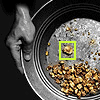Display Ad & SEM Study from iProspect

Despite considerable speculation about the relationship between search engine marketing and online display advertising, findings from a new study from iProspect indicate that the two channels have a closer relationship than many marketers may have thought.
iProspect's Search Engine Marketing and Online Display Advertising Integration Study shows that Internet users initially respond to the medium as follows: 31% respond by directly clicking on an ad; 27% respond by searching for the product, brand, or company by launching a search on a search engine; 21% respond by typing the company Web address into their browser and directly navigating to the website; and 9% respond by investigating the product, brand, or company through social media venues. Overall, 52% of Internet users actively respond to online display advertising.
But beyond Internet users' initial response to online display advertising, the study also reveals some interesting findings when the latency element is taken into consideration. When asked how they eventually respond, nearly half of Internet users (49%) who respond to online display ads (52%) launch a search on a search engine for the company, product, or brand that was the focus of the ad to which they were exposed. This figure is comprised of those who eventually perform a search and visit the website from the search results (38%), those who do the same but actually purchase the product (14%), and those who perform a search but do not click on any of the results (11%).
Other key findings from the study include:
- One third of Internet users (33%) who respond to online display advertising eventually purchase from a company/offering with which they are familiar - more than twice the number who eventually purchase after learning of an offering/company for the first time from online display advertising (14%).
- Nearly four in ten Internet users (38%) who respond to online display advertising learn about a brand for the first time as a result of their exposure to this type of ad.
- 9% of Internet users who respond to online display advertising initially respond by investigating the product, brand, or company through social media venues or message boards.
"At the end of the day, the findings from this study closely tie search and online display advertising together," said Robert Murray, CEO, iProspect. "Overall, they tell a story of improved efficacy, which is a message that marketers should find particularly compelling during these trying economic times when they are being asked to do more with less."
"Clearly, this finding underscores the close relationship between search and online display advertising," said Misty Locke, President, Range Online Media, and Chief Strategy Officer, iProspect. "First, it speaks to the power of display to drive search, and it demonstrates search's ability to boost the effectiveness of display. However, it also quantifies the risk associated with not supporting the display channel with search engine marketing. Obviously, marketers who fail to do so will be missing out on a considerable portion of potential website visitors, and as the stats show, customers. The findings also speak to the need for marketers to implement attribution modeling that is created with their needs in mind. This is key to understanding not only the impact of search and display on conversions, but also the impact of all of their online tactics."










